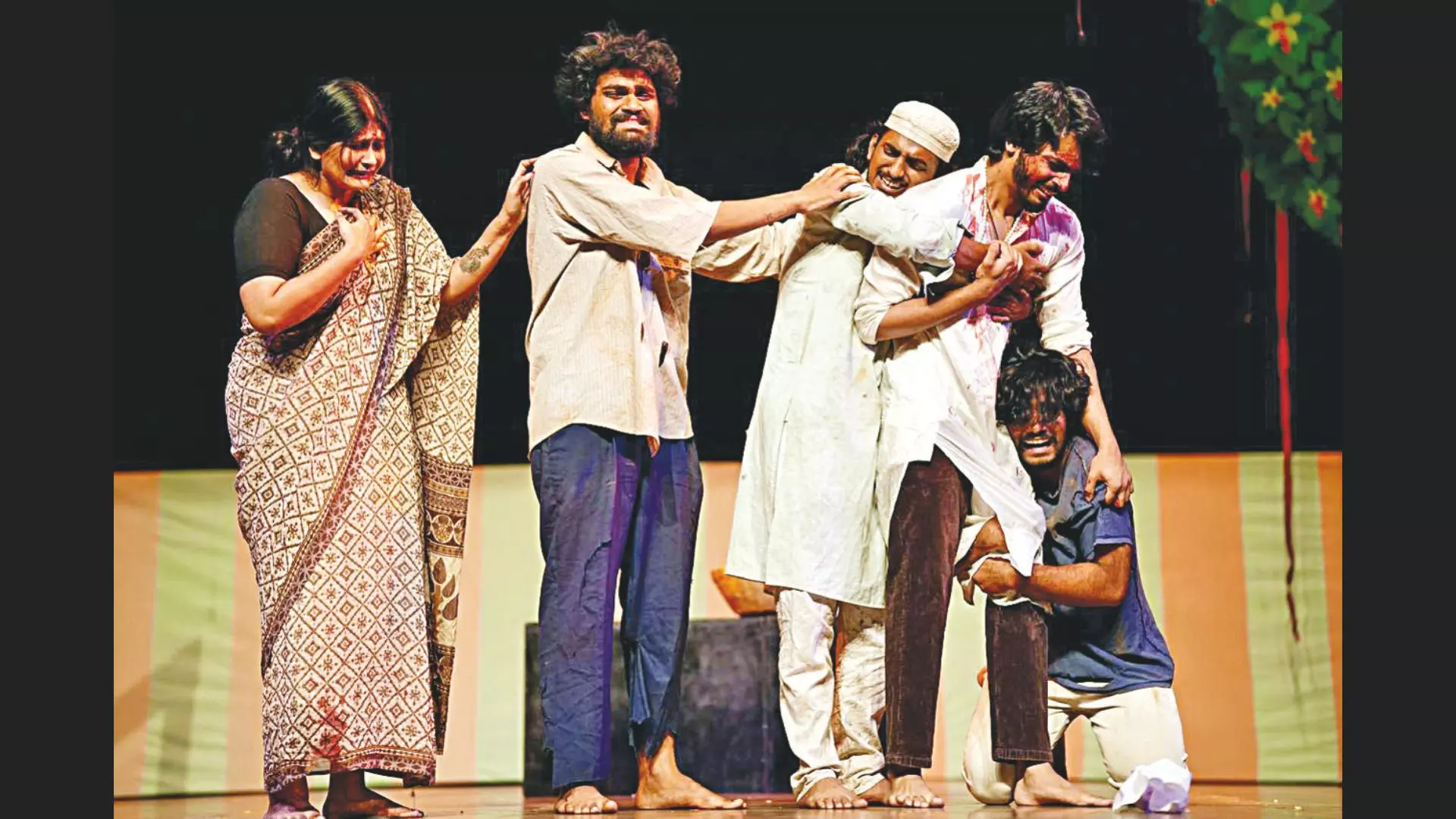The Young & Restless Drama Co.
From college plays to folk theatre and nukkad nataks, there’s a rise of youth theatre companies across the country, with talented youngsters turning into riveting storytellers

All the world’s a stage, and all the men and women merely players,” Shakespeare once mused, but if he were alive today, he might just marvel at India’s latest act: a rise of youth theatre communities. Across the subcontinent, young thespians are stepping into the spotlight, flipping scripts, and rewriting the rulebook with a mix of passion and panache. From bustling urban streets to the quiet corners of rural villages, these up-and-coming actors and playwrights are not just performing — they’re revolutionizing storytelling with fresh perspectives and boundless energy. In this new theatrical renaissance, the stage is set for a generation of storytellers who are making their mark with wit, creativity, and a flair that even Shakespeare might envy.
All That Drama
“Practicing theatre not only betters them in story-telling, it touches a much deeper core that inculcates discipline, teamwork, being empathetic towards fellow humans and nature,” says Swapan Mondal, the founder-director of Shudrka, a Hyderabad-based theatre group, that has been performing multi-lingual plays since 2004. Often drawn to introversion, young people can find a sense of community and in Mondal’s words, “the freedom of imagination,” which immensely impacts their lives, regardless of their career pursuits.
Started in 1999, to encourage the young and dramatic, Thespo is another such community that actively hosts workshops on writing, acting, costume design, etc. It primarily operates from Mumbai, but its annual December festival hosts plays from across India. “Our purpose is to provide a platform for young talent to express their creativity and network with like-minded people,” says Govind Jha from Thespo.
Stories Galore
Rathna Shekar Reddy, the founder and President of Samahaara, a theatre group based in Hyderabad, shares his vision for the stories they tell. He emphasizes the diversity of their repertoire, stating, “Each play has its own unique story.” Samahaara’s productions span a variety of genres, including political satire, period dramas, and contemporary pieces.
For instance, they’ve tackled subjects like the irony of democracy through satirical plays, the farmer’s revolt against the Nizam during the Independence era through period dramas, and even contemporary themes like same-sex love with “Stop Kiss!”, a topic they intentionally chose to test how the audience of Hyderabad would react to such a piece.
Mondal on the other hand, is known for his experiments with folk drama. “My journey with folk theatre began with a profound sense of immersion in a world rich with tradition and history in undivided Andhra” he says.
Mondal recalls his days of training youngsters to perform for rural communities stating that training the youth involved a lot of hands-on work. “We started with basic acting techniques and traditional dance forms, I used multimedia resources, storytelling, and demonstrations to make the content engaging and accessible. Seeing their eyes light up as they learned about the colorful costumes, traditional dances, and ancient stories was incredibly rewarding” he adds.
Beyond folk theatre, these groups also explore multi-lingual plays, producing original works or adaptations of famous stories in Telugu, Bengali, Hindi, and English. This allows young artists to dive head-first into the nuances, practices, traditions, language and lifestyles of different Indian cultures.
Budding Voices
“As a wide-eyed 10 or 12-year-old, I found my calling here,” describes Gruheita Chaitanya, who is now a 17-year-old young actor from Mumbai. She started her journey two years ago by signing up for inter-collegiate events, fests and “Nukkad Nataks” which are played with a social message, and performed in public.
Chaitanya mentions that her biggest takeaway from the theatre was learning the patient art of observing. “Through theatre, I’ve developed a deeper ability to express myself and inhabit various characters. By carefully observing different characteristics, I’ve learned that each one carries its own unique story, enriching my understanding of the role I’m portraying,” she says.
Looking forward to building a career in performing arts, Chaitanya is open to being a part of as many stories as she can. “While acting is my core, I’m also exploring the field of filmmaking, to develop holistically as a story-teller,” she adds.
Stage vs Screens
But, is it easy to make them pull out these youngsters from the confines of their sofas and mini-screens? Reddy says that his no phone policy during rehearsals and workshops has helped to tackle this issue. As for the audience, Reddy says that digital content is always accessible, but there comes a point when users feel exhausted and burnt out. “People want to break this dopamine circuit, and since the human mind constantly seeks variety in entertainment, they often turn to watching a play,” he adds.
For Mondal, who has been in the game for more than 30 years, it’s the responsibility of the actors/directors to engage the audience. “Social media and OTT platforms make attracting audiences to the theatre challenging, but engaging them relies on the performer’s skill,” he states.
“Ultimately, what is the purpose of art,” poses Reddy. “It’s a means for an artist to achieve his true potential and while he does that, he takes the audience on a journey to achieve their true potential as well,” he finishes.

